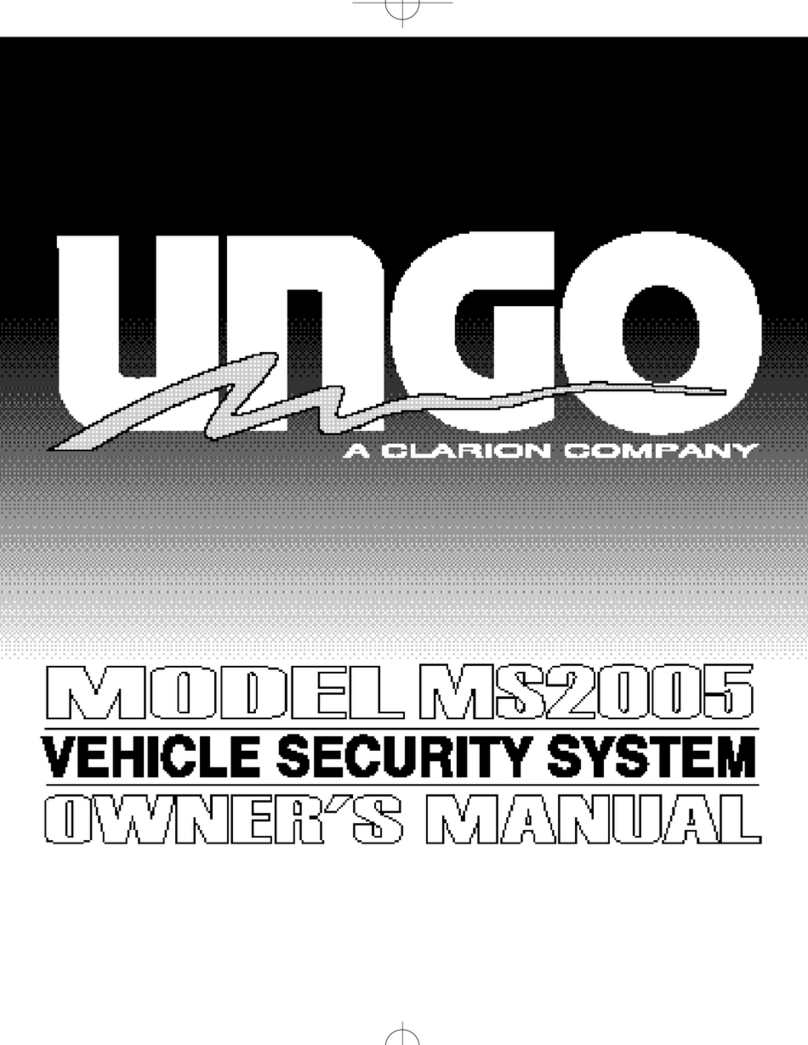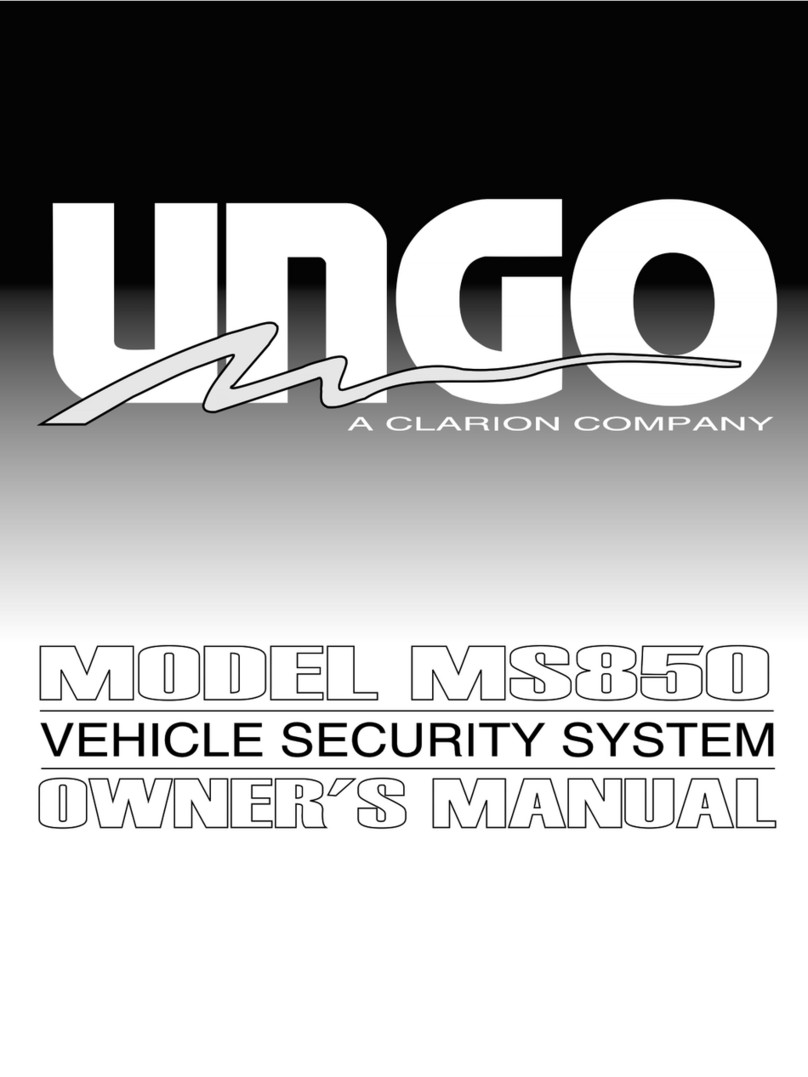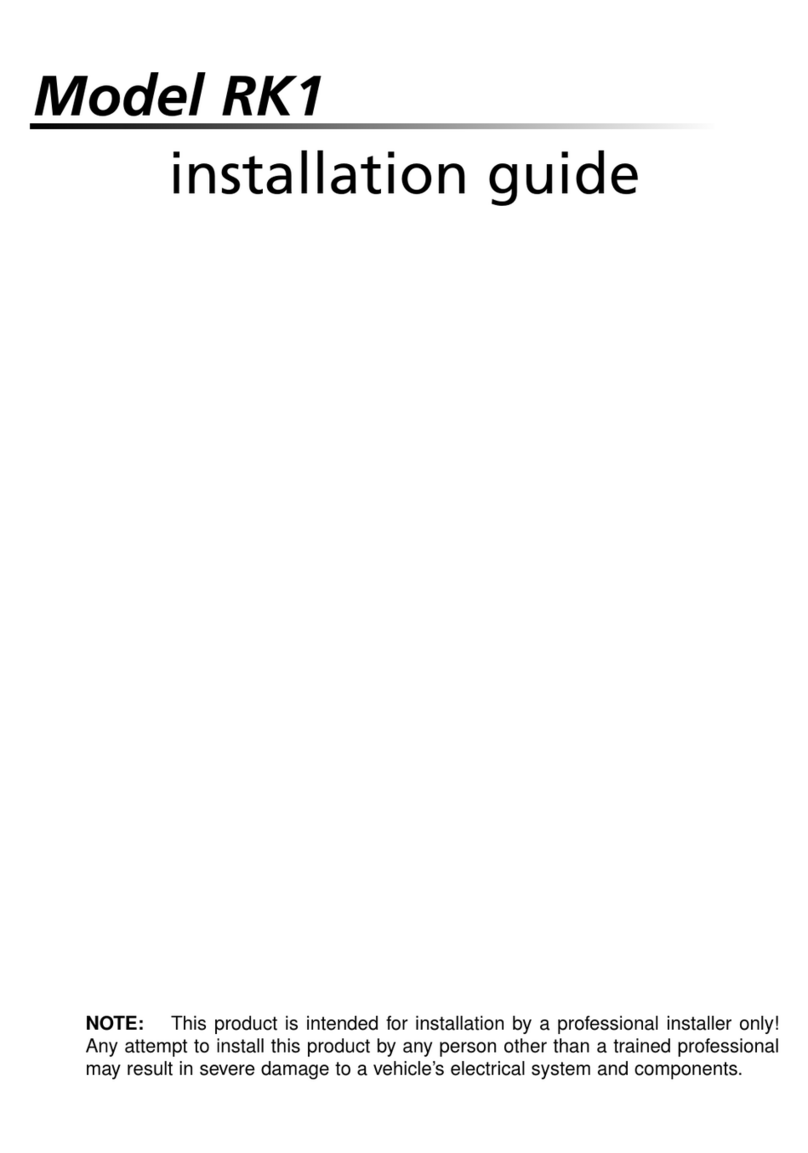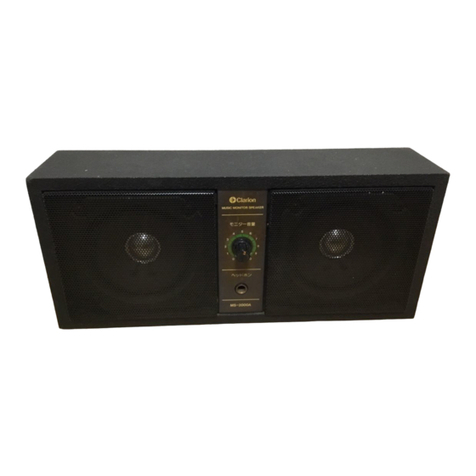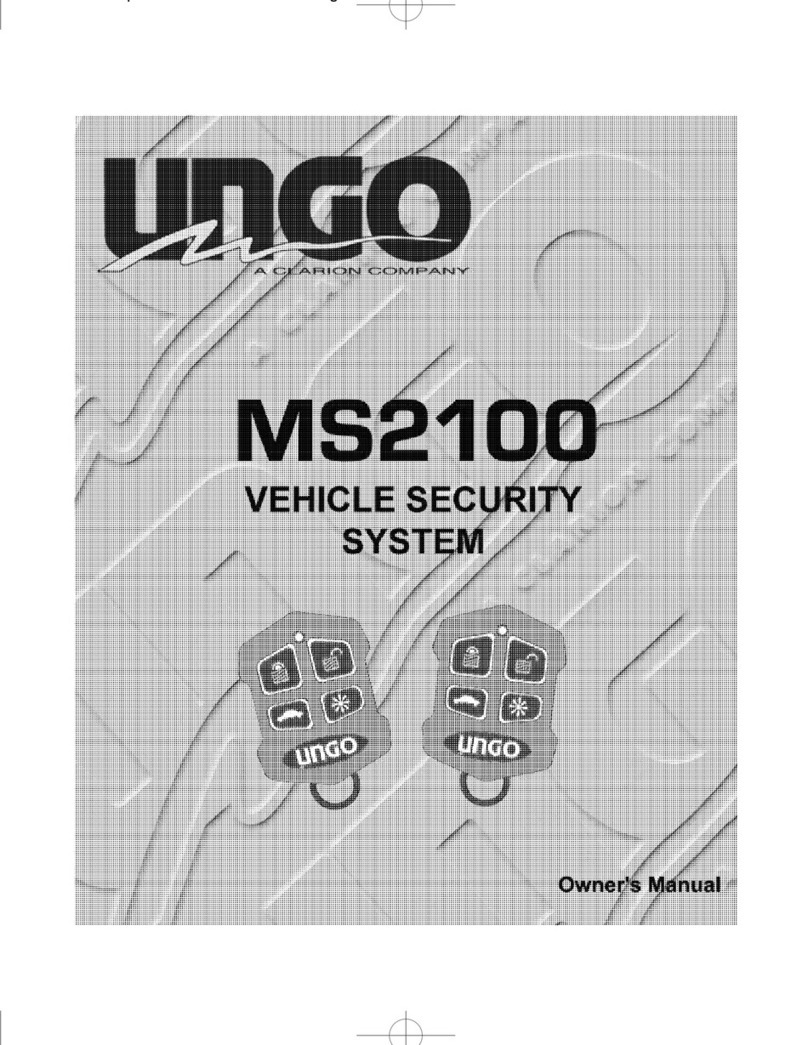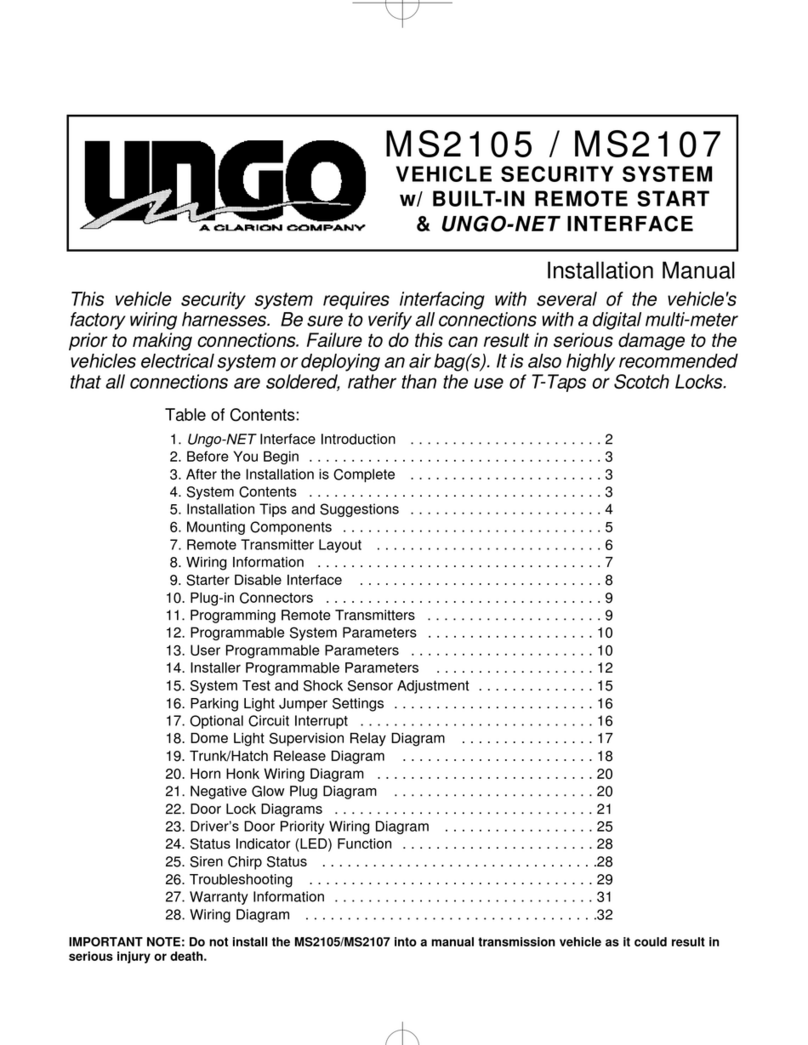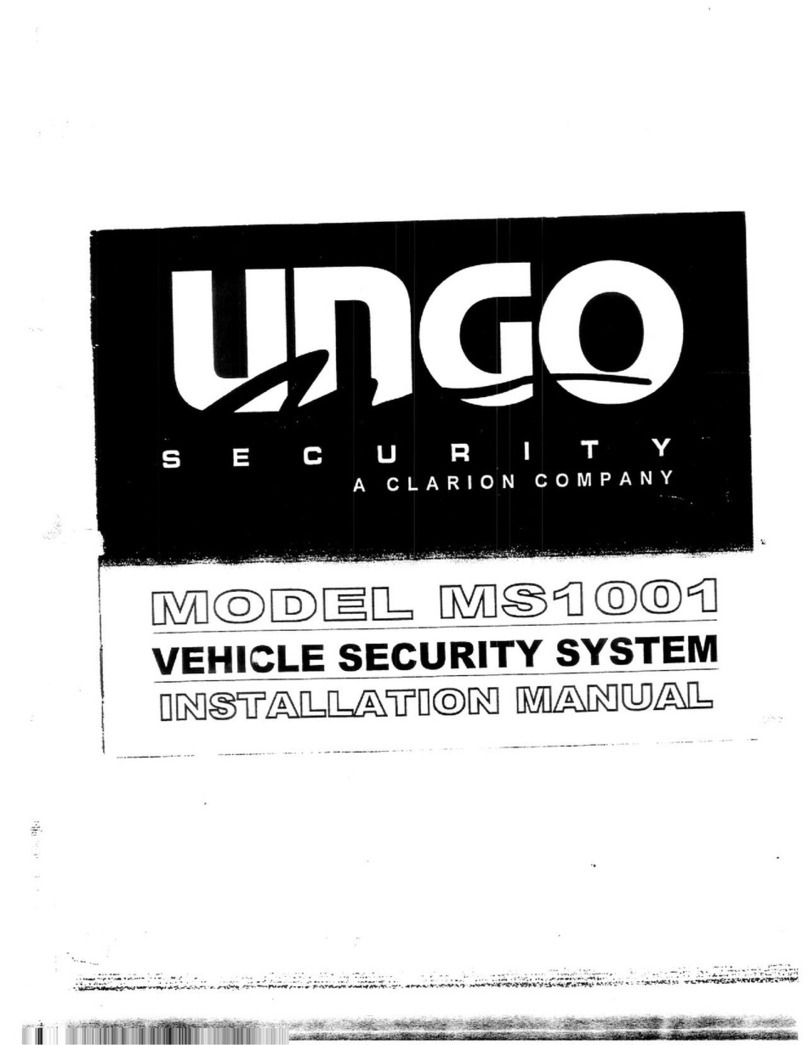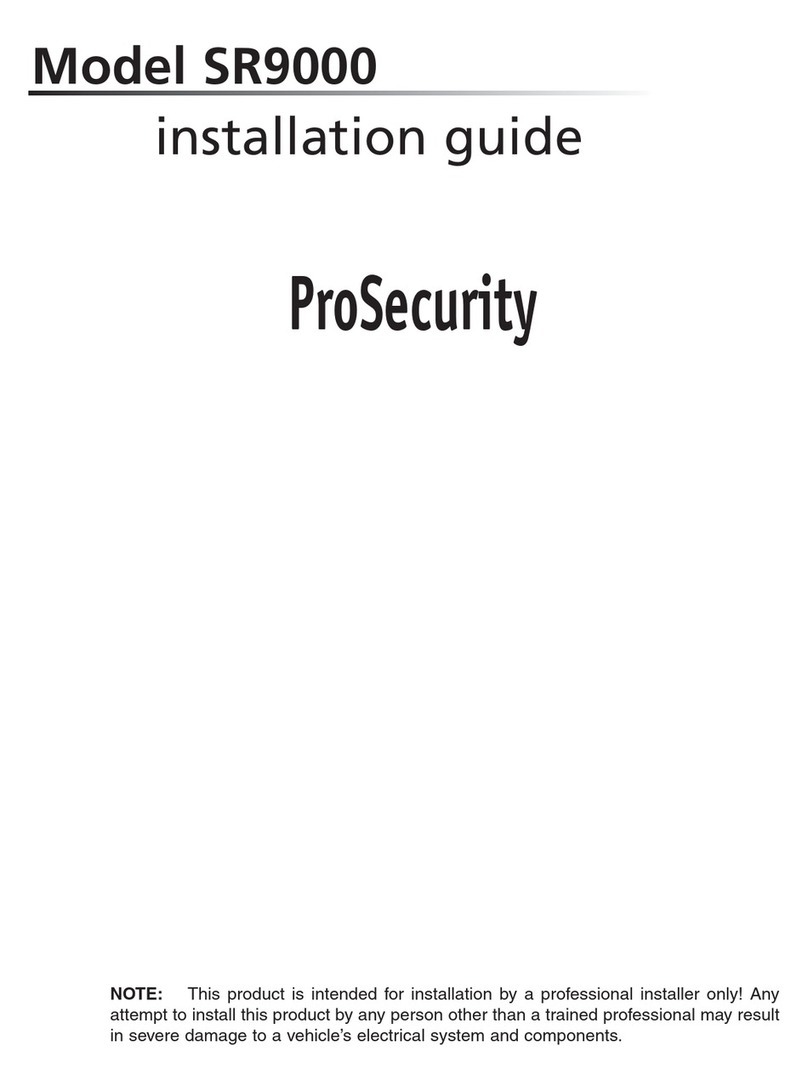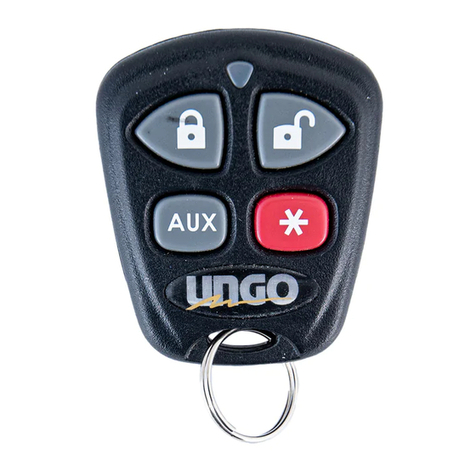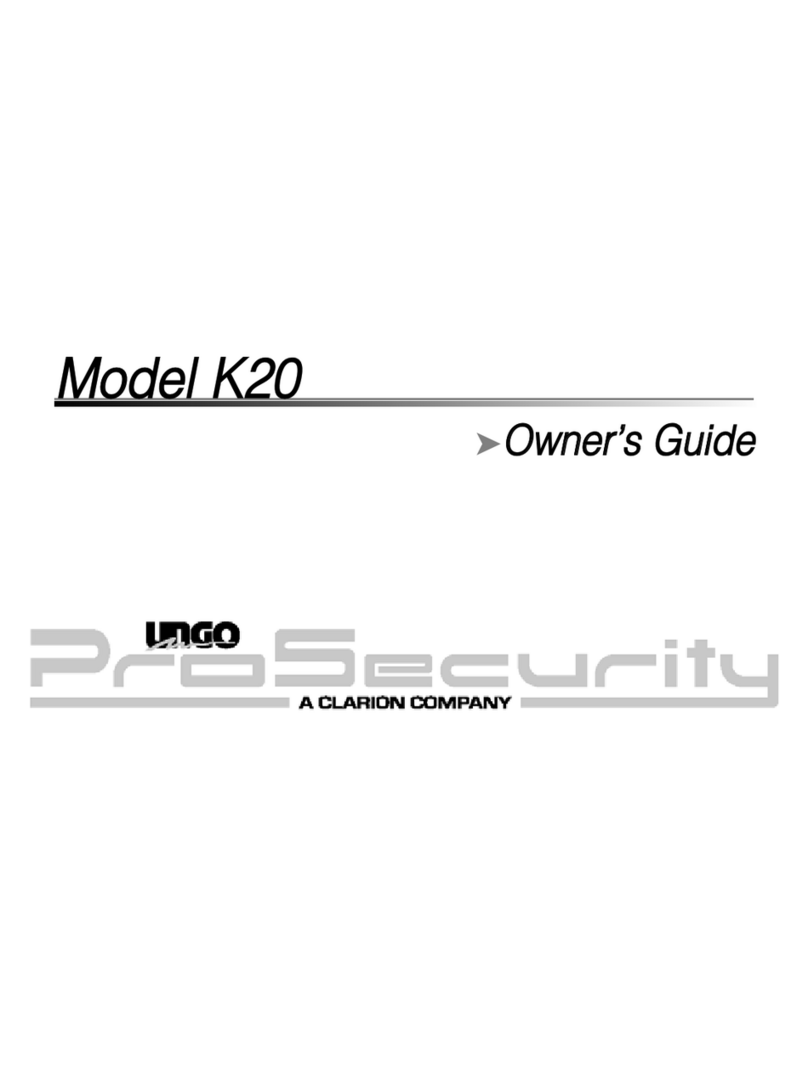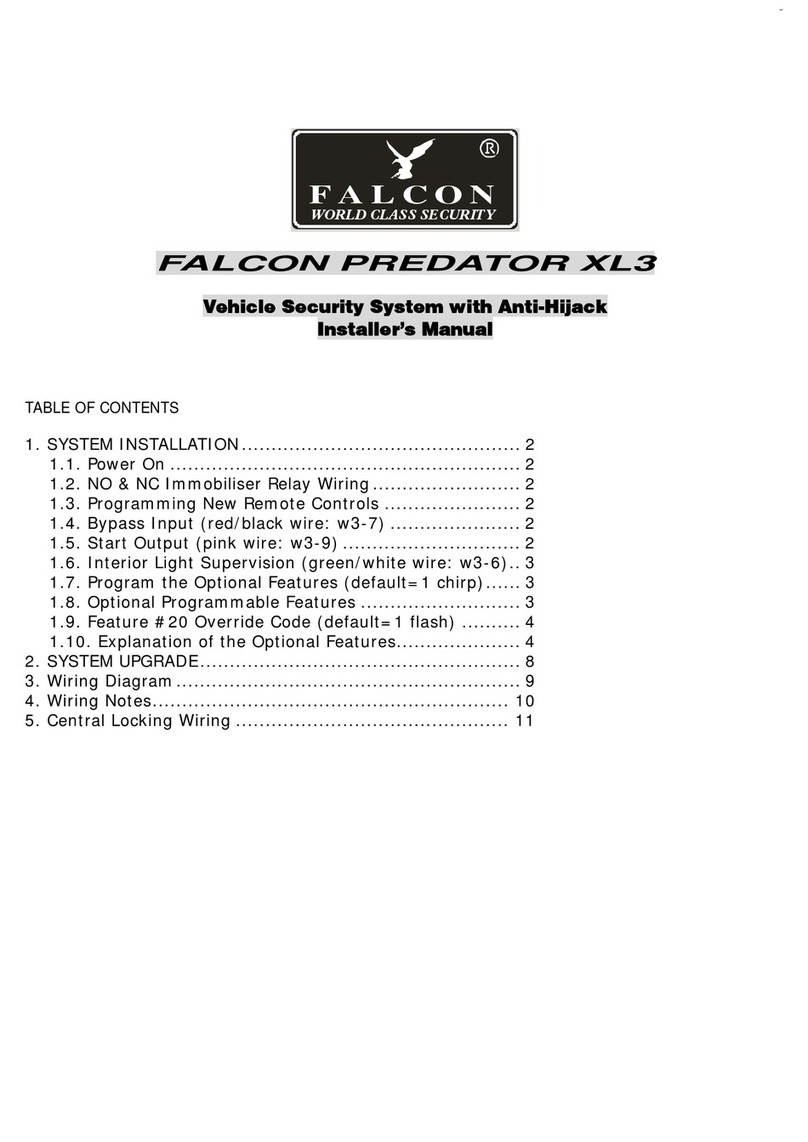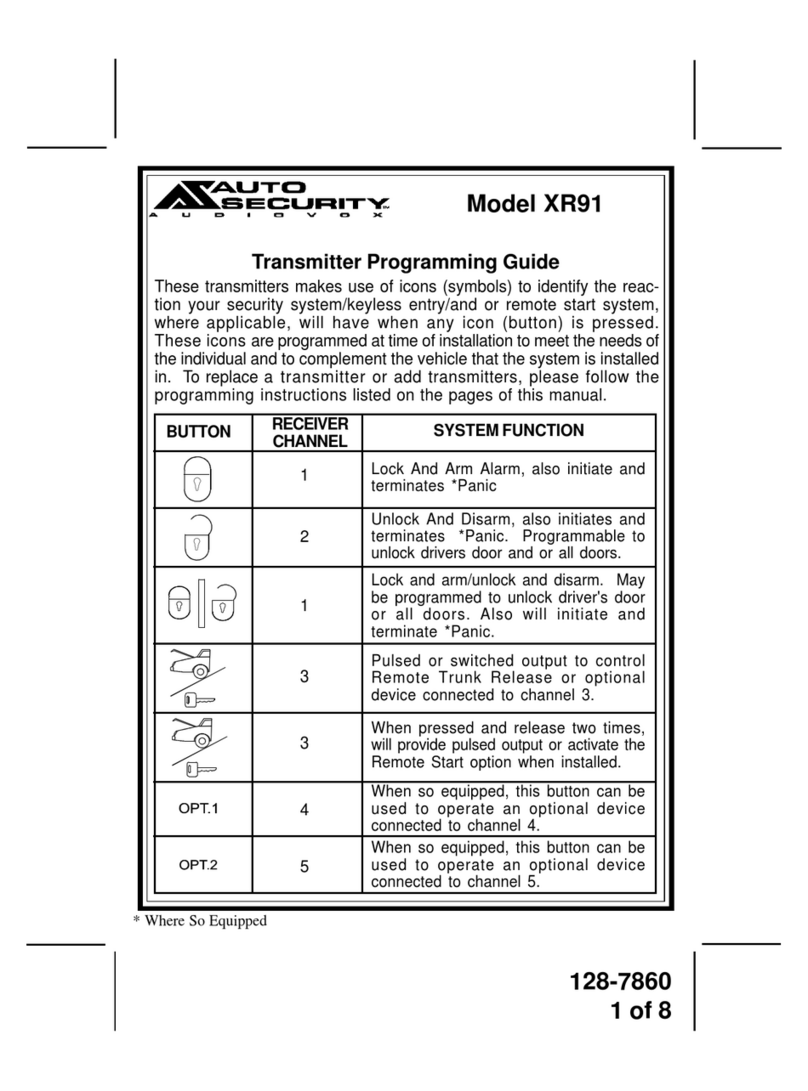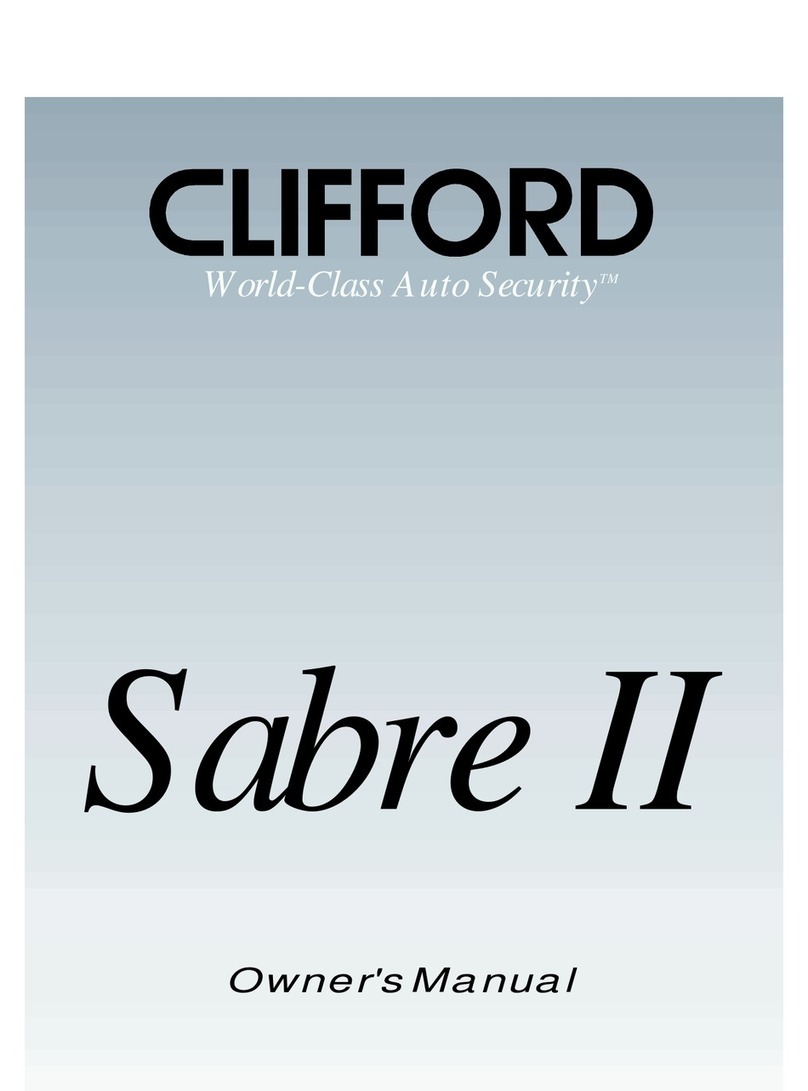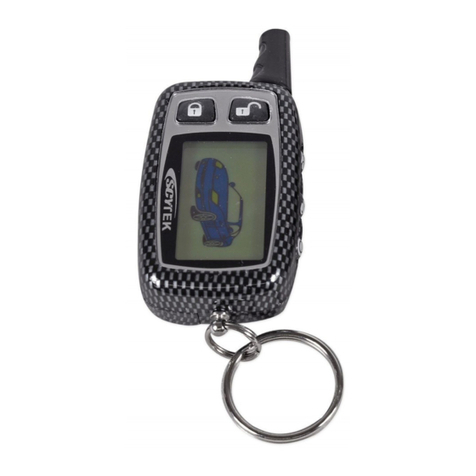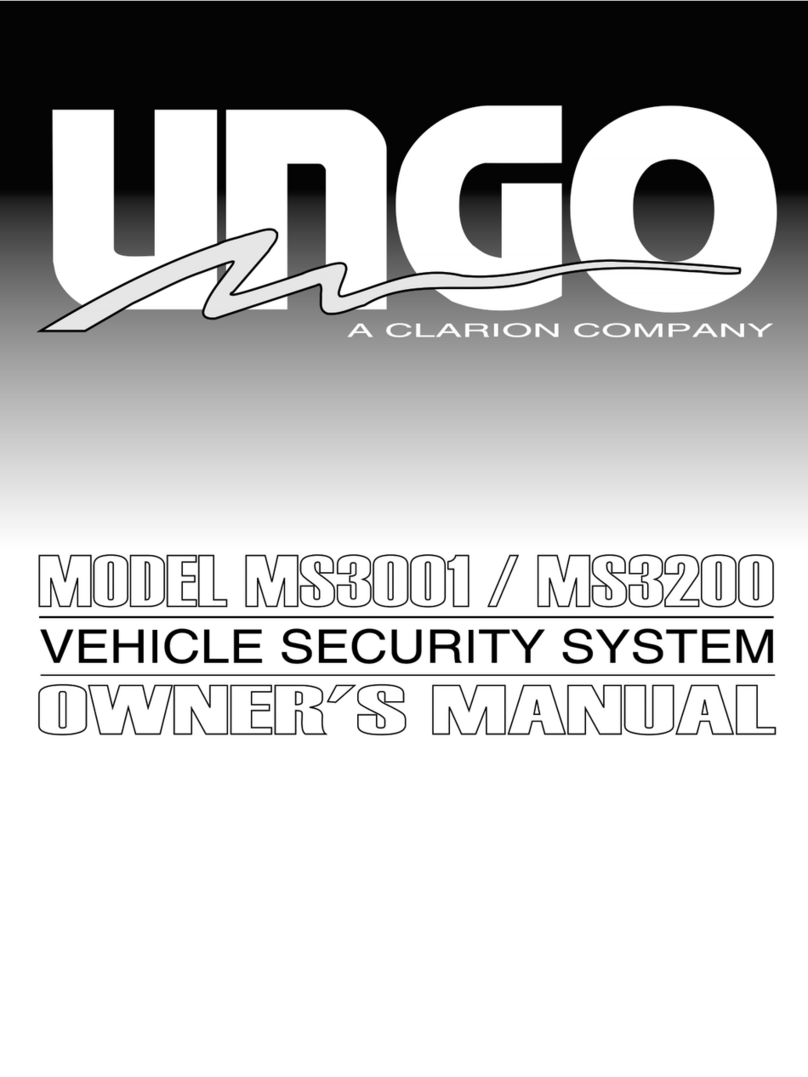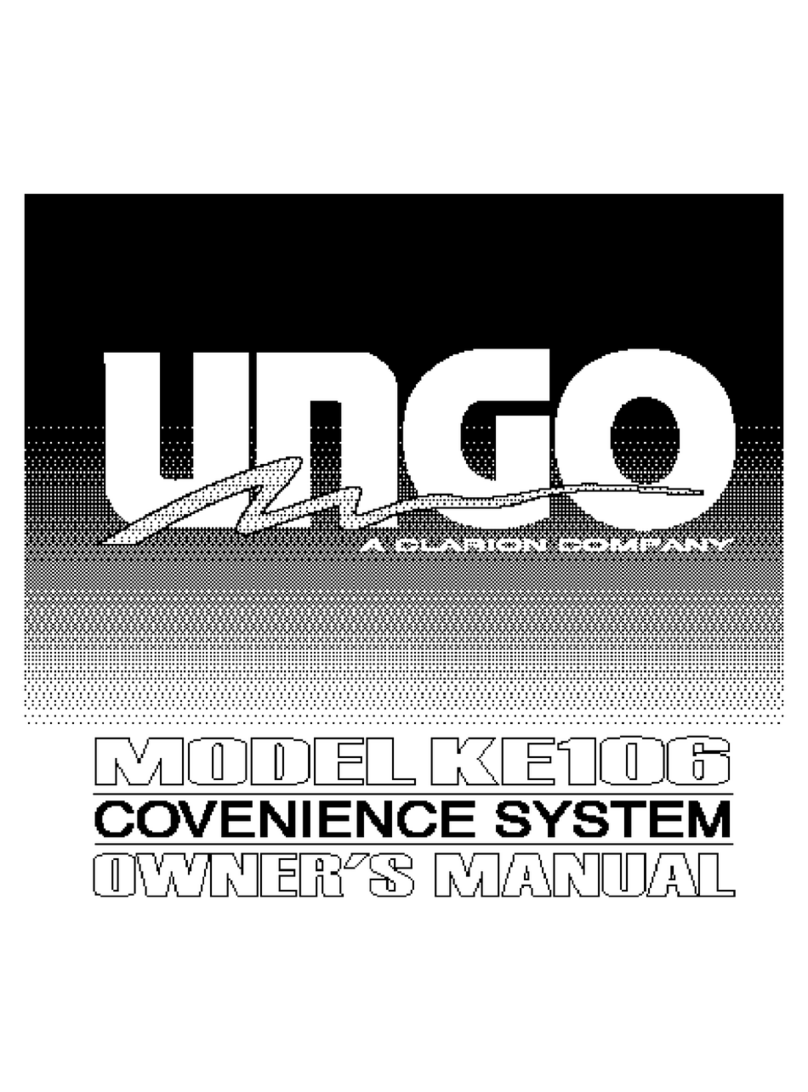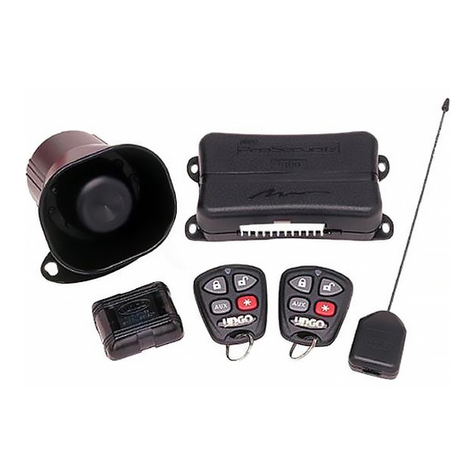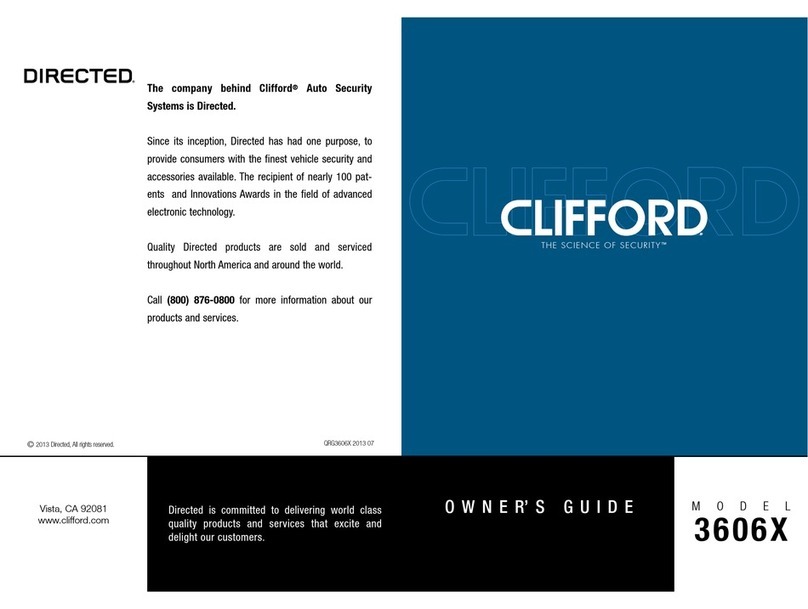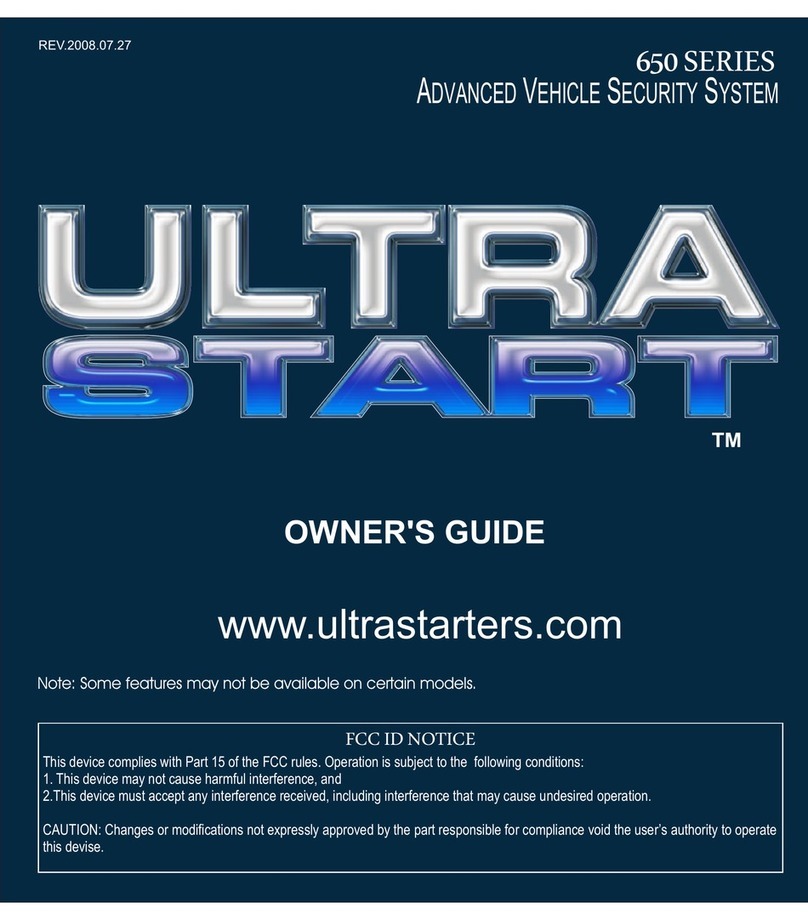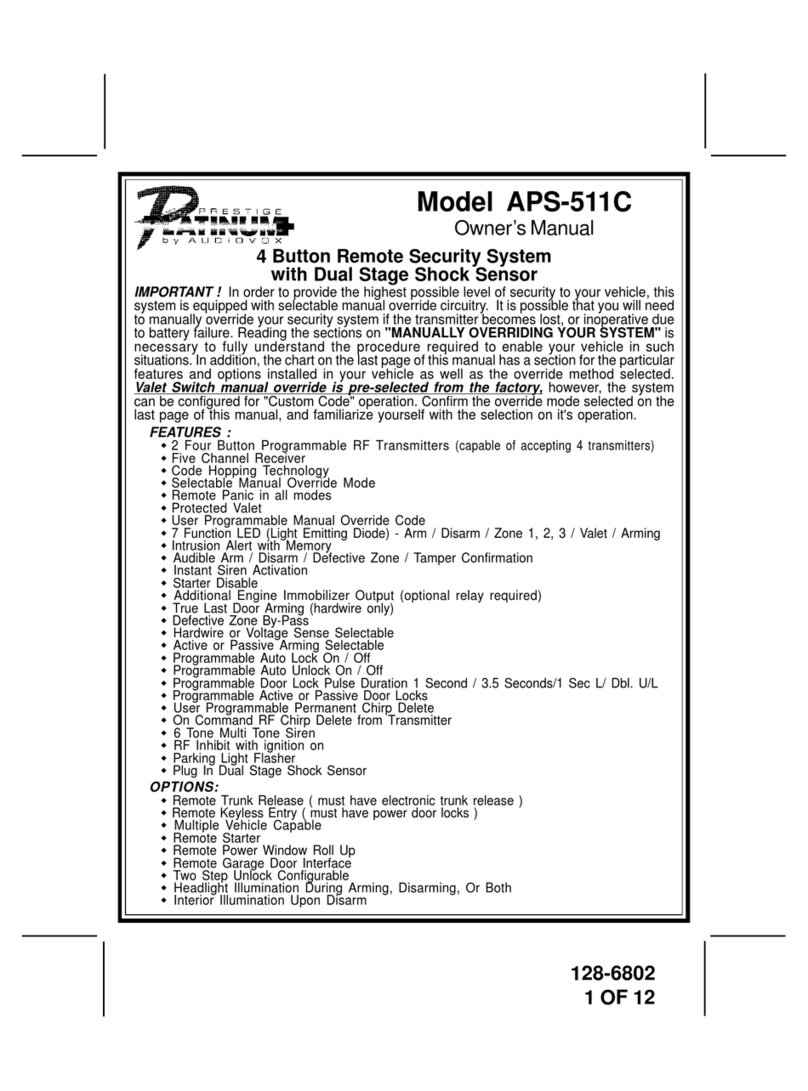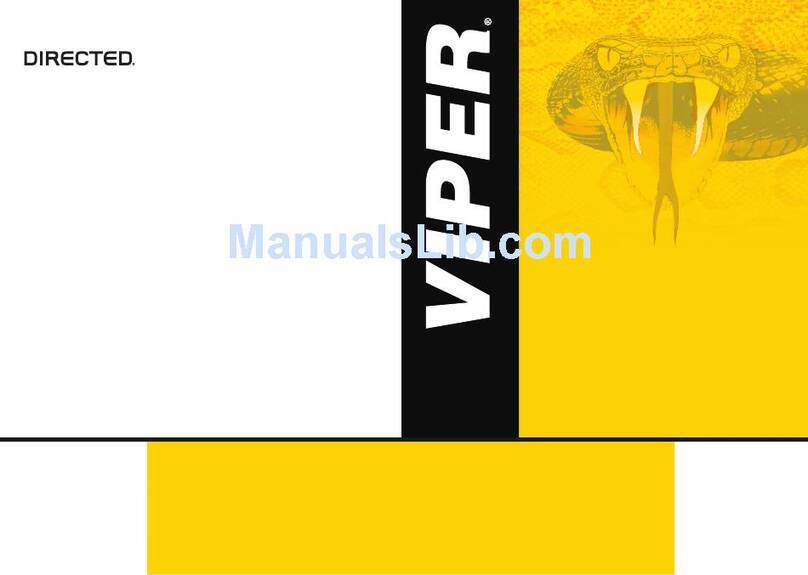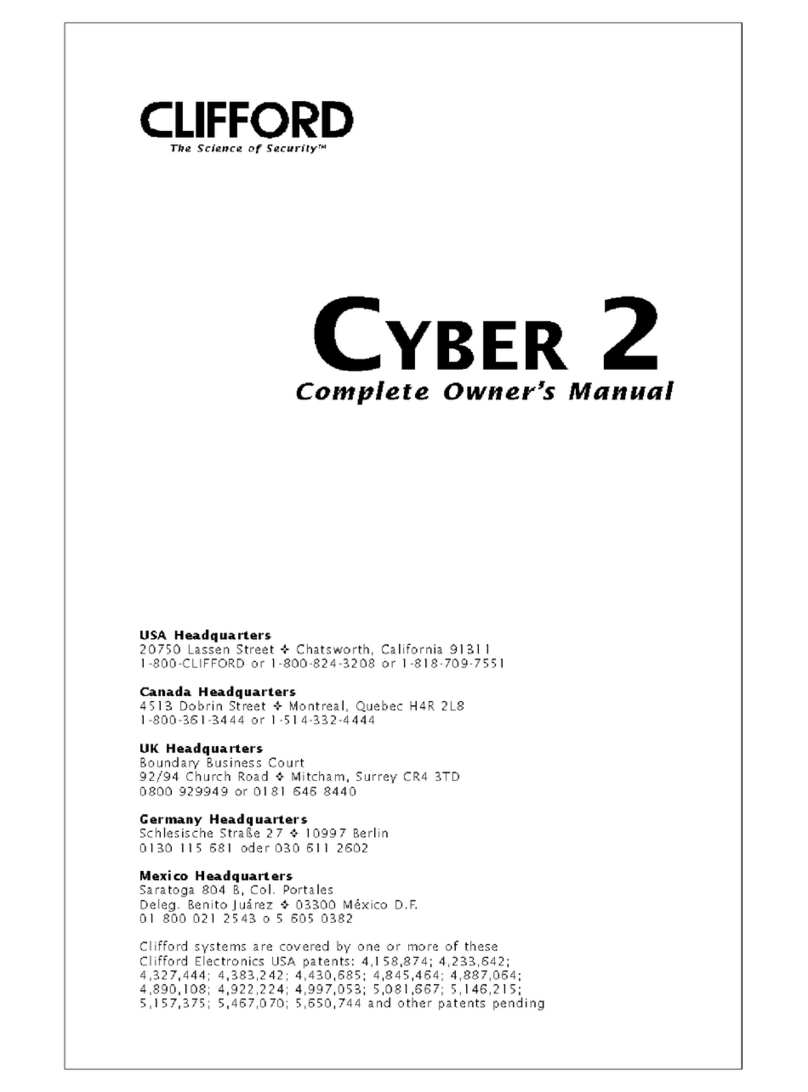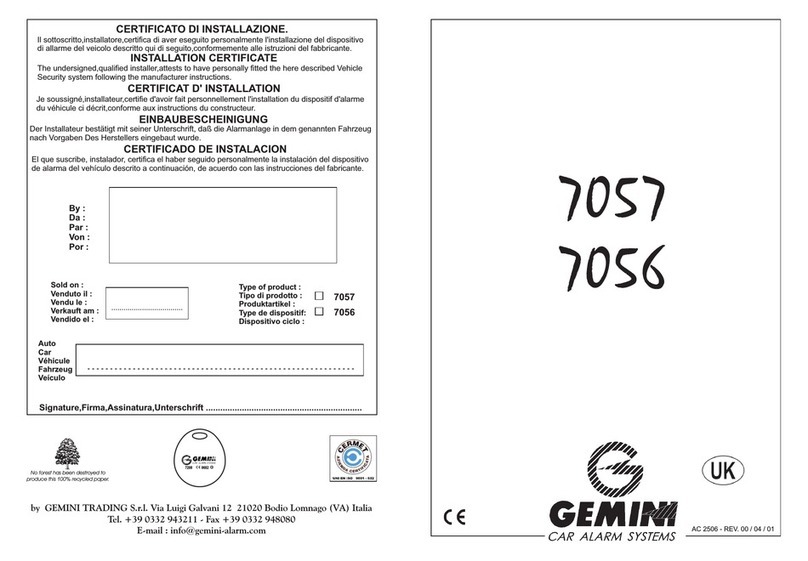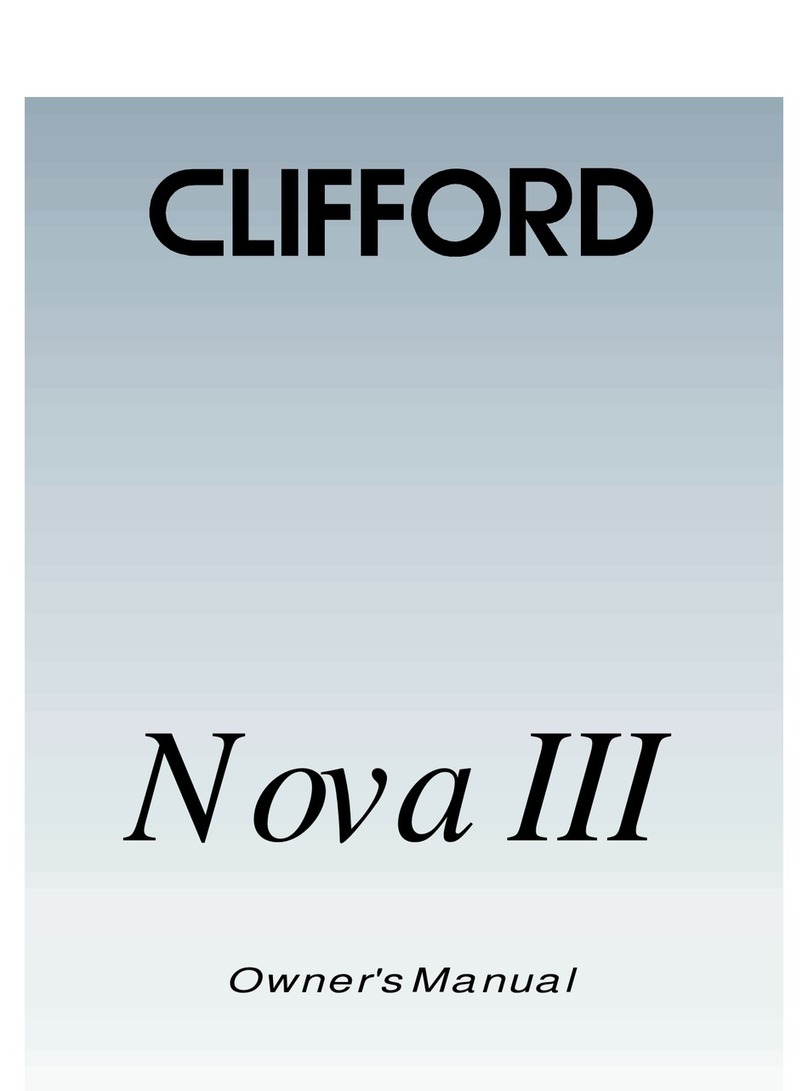33
ttaabblleeooffccoonntteennttss
wwaarrnniinngg!!ssaaffeettyyffiirrsstt................................................44
iinnssttaallllaattiioonnppooiinnttssttoorreemmeemmbbeerr................................44
before beginning the installation . . . . . . . . . . . . 4
after the installation . . . . . . . . . . . . . . . . . . . . . 4
ddeecciiddiinnggoonnccoommppoonneennttllooccaattiioonnss..............................55
locations for the siren . . . . . . . . . . . . . . . . . . . . 5
locations for the control module . . . . . . . . . . . . . 5
locations for stinger doubleguard shock sensor . . . 6
locations for valet/program switch . . . . . . . . . . . 7
locations for the status LED . . . . . . . . . . . . . . . . 7
locations for the optional starter kill relay . . . . . . 8
ffiinnddiinnggtthheewwiirreessyyoouunneeeedd........................................88
obtaining constant 12V . . . . . . . . . . . . . . . . . . . 8
finding the 12V switched ignition wire. . . . . . . . . 9
finding the starter wire . . . . . . . . . . . . . . . . . . . 9
finding a (+) parking light wire . . . . . . . . . . . . . 10
finding the door pin switch circuit. . . . . . . . . . . 11
mmaakkiinnggyyoouurrwwiirriinnggccoonnnneeccttiioonnss..............................1122
pprriimmaarryyhhaarrnneessss((HH11)),,1122--ppiinnccoonnnneeccttoorr....................1133
aauuxxiilliiaarryyhhaarrnneessss((HH22)),,66--ppiinnccoonnnneeccttoorr....................1133
ddoooorrlloocckkhhaarrnneessss,,33--ppiinnccoonnnneeccttoorr..........................1144
rriibbbboonnhhaarrnneessss,,wwiirriinnggddiiaaggrraamm................................1144
pprriimmaarryyhhaarrnneessss((HH11))wwiirreeccoonnnneeccttiioonngguuiiddee..............1155
sseeccoonnddaarryyhhaarrnneessss((HH22))wwiirreeccoonnnneeccttiioonngguuiiddee..........2200
pplluugg--iinnLLEEDDaannddvvaalleett//pprrooggrraammsswwiittcchh......................2222
pprrooggrraammmmeerriinntteerrffaaccee,,33--ppiinnbbllaacckkpplluugg....................2222
sshhoocckksseennssoorrhhaarrnneessss,,44--ppiinnccoonnnneeccttoorr......................2233
pprrooggrraammmmiinnggjjuummppeerrss............................................2244
light flash (+)/(-) . . . . . . . . . . . . . . . . . . . . . . 24
ttrraannssmmiitttteerr//rreecceeiivveerrlleeaarrnnrroouuttiinnee™™..........................2244
ttrraannssmmiitttteerrccoonnffiigguurraattiioonnss......................................2266
standard configuration . . . . . . . . . . . . . . . . . . . 26
mmuullttii--lleevveellsseeccuurriittyyaarrmmiinngg......................................2288
ssyysstteemmffeeaattuurreesslleeaarrnnrroouuttiinnee..................................2288
ffeeaattuurreemmeennuuss........................................................3300
menu #1 - basic features . . . . . . . . . . . . . . . . . 30
menu #2 - advanced features . . . . . . . . . . . . . . 31
ffeeaattuurreeddeessccrriippttiioonnss................................................3311
menu #1 - basic features . . . . . . . . . . . . . . . . . 31
menu #2 - advanced features . . . . . . . . . . . . . . 33
nnuuiissaanncceepprreevveennttiioonncciirrccuuiittrryy™™....
............................3355
vvaalleettmmooddee...........................................................
.3355
ttaabblleeooffzzoonneess........................................................3366
lloonnggtteerrmmeevveenntthhiissttoorryy..........................................3366
ttrroouubblleesshhoooottiinngg....................................................3377
alarm troubleshooting . . . . . . . . . . . . . . . . . . . 37
wwiirriinnggqquuiicckkrreeffeerreenncceegguuiiddee....................................3388

